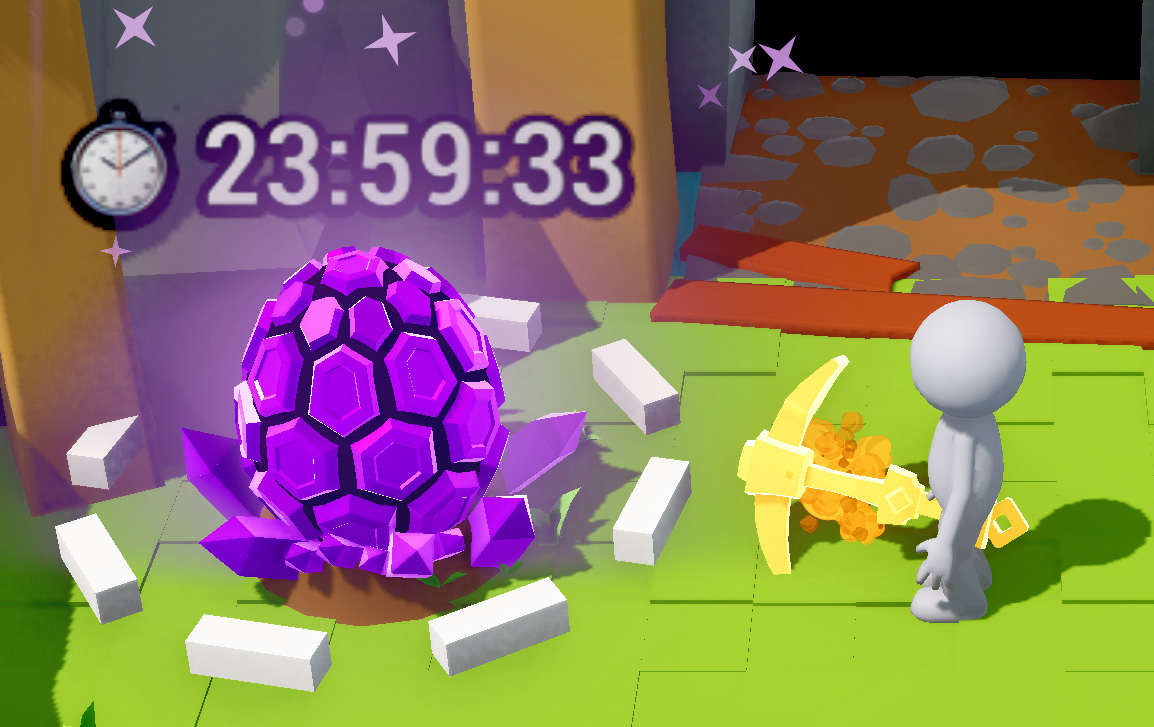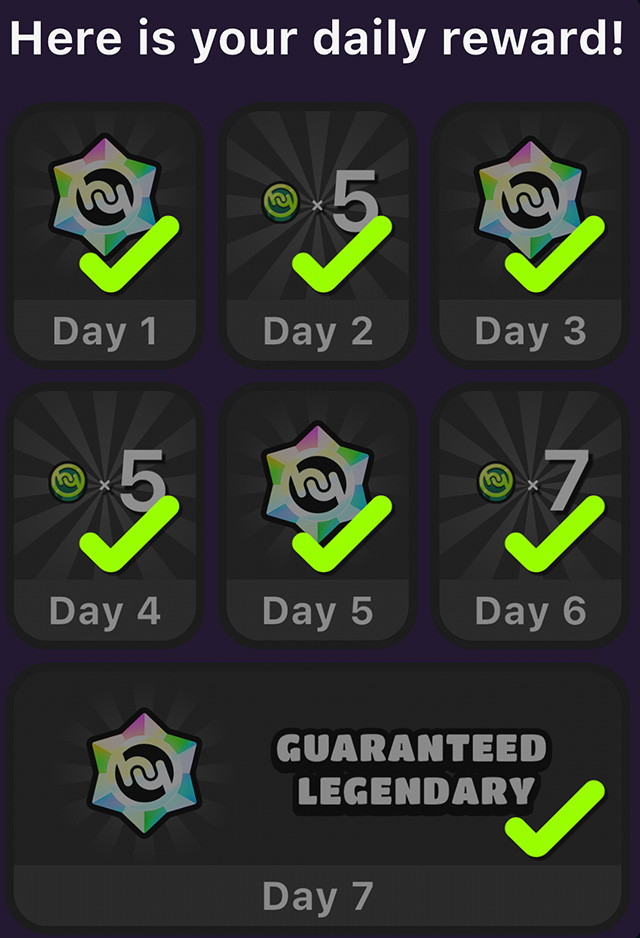¶ What is a game session?
A game session is a period of time during which a player interacts and engages with a game.
For instance, if a player comes and plays your game 3 individual times throughout a day, this would be classed as 3 game sessions.
¶ Why is this important?
Much like game retention, sessions indicate that your gameplay is resonating with your players and they're coming back for more.
Whilst many games are designed for long playtime sessions, others are also perfect for short bursts of entertainment and are not suited to be played for hours at a time.
This is why we reward creators on both playtime and a session multiplier. The more sessions a player plays, the higher the payout multiplier.
For example, a player’s 3rd play session pays creators 10x more per minute as their 1st session!
¶ Best Practices for Increasing Sessions
¶ Core gameplay loop
Making a fun and addicting gameplay loop is critical for your games success overall, but by design think about how you can ringfence your gameloop that could encourage more sessions rather than an endless experience.
Of course, not every game will be suited to this game design set up, and for many instances, exploring this option could set you apart from similar games and bring a unique and fresh experience.
Creating levels is a perfect way to achieve natural breaks in your gameplay. This gives players something to head towards and a perfect time to take a pause in gameplay and display progress.
This is also a great opportunity to reward your players, tease upgrades and re-enforce Short, Mid and Long term game goals.
¶ Adding Timed Rewards

Adding rewards in your game is typically always a great idea, everybody loves free stuff!
To encourage your players to return back later, adding timed rewards can be a powerful motivator to trigger re-engagement.
There are many ways to design timed rewards and a you've likely encountered a "daily" freebie. If you want to go the extra mile you can also add an extra condition for an extra bonus reward on day 7!

You can get really creative with this although we'd also suggest not going overboard here. If the reward is not generous enough or there's simply too many, they can become less enticing.
We'd also recommend experimenting with timed gameplay or character buffs too. This can work well where your player has increased heath or power for a short time, say 2 minutes of super speed or increased jump height, whatever feels appropriate for your game.
Again, be intentional to find that balance and as always, test and check your stats to understand the impact of theintroduction of these changes.
¶ Announce Future Rewards
We always want to delight our players with surprises to build up their excitement, but announcing upcoming rewards are not far away if they keep on playing can work great also.
If you have a level based game and you have a special reward waiting for them at Level 5, why not show them a pop up stating that they're only a few levels away from gaining it.
This can not only increase your overall playtime, but might just be the reason they return a little later when they have more time to dedicate to playing.
Building excitement in this way can really hook your players attention and make them eager to return and claim their special reward.
¶ Short, Mid and Long Term Goals
Setting tasks and goals within your game is a tried and tested game design trait.
In a very basic form, this could something like this:
Long Term: Find all 5 Gems to Complete the game.
Mid Term: Collect 1 Gem at the end of each Level.
Short Term: Complete Missions within the Levels.
We want to ensure our players are aware of these and motivate them into thinking they can be achieved over time.
This is similar psychology to when we have a huge list of things to do. It can be overwhelming to see everything in one big block, but by breaking it down it feels possible and more rewarding to cross each one off.
It helps players recognize accomplishments and for some players they will gain a sense of satisfaction and motivation, especially for being rewarded and improving along the way.
¶ Related Topics
How to add In-App Purchases How to Improve Retention How to Improve Playtime How to Improve Conversion Rate How to Improve Game Performance